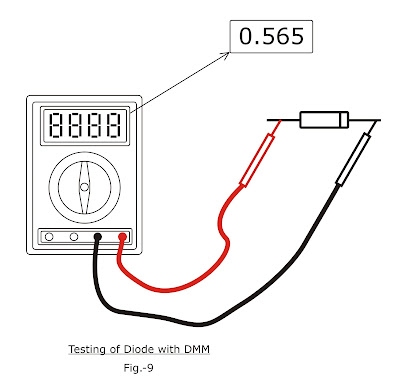POWER SUPPLY
Each and every electronic circuit requires a power supply. Power supply is a heart of any electronic circuit whether simple or complex, analogue or digital.
It is well established fact that the performance and life expectancy of an electronic circuit largely depends on the performance of its power supply.
Alternating current it self cannot operate an electronic circuit. It has to be converted into direct current to give life to an electronic circuit.
Three basic power supplies are given below.
1. Half Wave Rectifier Circuit.
Full wave rectifier power supply is same as half wave circuit. The difference is centre tapping transformer and two diodes are used instead of one. One of the diodes allow current during positive half cycle and the other diode conducts during the negative half cycle. This enable filter capacitor to charge during the both half cycles. The resultant ripples in D.C. line are one half of the half wave rectifier supply. This improves the quality of out put D.C.
2. Bridge Rectifier Circuit.
Bridge rectifier power supply produce same results as the full wave rectifier does. This type of supply uses four rectifier diodes connected in a bridge. The main advantage of bridge rectifier is that it does not require centre tapping transformer thereby reducing size and cost. During the positive half cycle diode D2, D3 conduct in series and diodes D1, D4 remain reverse biased. While during negative half cycle diode D1, D4 conduct and D2, D3 are reverse biased.
P.S. - Compare the out put wave form with grey shaded area in Fig1 and Fig-3, 4.
Each and every electronic circuit requires a power supply. Power supply is a heart of any electronic circuit whether simple or complex, analogue or digital.
It is well established fact that the performance and life expectancy of an electronic circuit largely depends on the performance of its power supply.
Alternating current it self cannot operate an electronic circuit. It has to be converted into direct current to give life to an electronic circuit.
Three basic power supplies are given below.
1. Half Wave Rectifier Circuit.
This is the most common and simple power supply. Diode D1 allows positive half cycle to charge the capacitor C1. During negative half cycle diode D1 does not allow capacitor to charge and during this period capacitor C1 discharges slightly through load, however, it is recharged during the next positive half cycle. Due to this out put D.C. voltage does not remain constant which results in rippled D.C. voltage. These ripples increase as the load current rises. Therefore, such power supplies require larger filter capacitor. Due to this factor half wave rectifier power supply is not suitable for higher and critical loads. It supports only small load (100 to 200 m.A.). e.g. relay driver circuits.
2. Full Wave Rectifier Circuit.
2. Full Wave Rectifier Circuit.
Full wave rectifier power supply is same as half wave circuit. The difference is centre tapping transformer and two diodes are used instead of one. One of the diodes allow current during positive half cycle and the other diode conducts during the negative half cycle. This enable filter capacitor to charge during the both half cycles. The resultant ripples in D.C. line are one half of the half wave rectifier supply. This improves the quality of out put D.C.
2. Bridge Rectifier Circuit.
Bridge rectifier power supply produce same results as the full wave rectifier does. This type of supply uses four rectifier diodes connected in a bridge. The main advantage of bridge rectifier is that it does not require centre tapping transformer thereby reducing size and cost. During the positive half cycle diode D2, D3 conduct in series and diodes D1, D4 remain reverse biased. While during negative half cycle diode D1, D4 conduct and D2, D3 are reverse biased.
P.S. - Compare the out put wave form with grey shaded area in Fig1 and Fig-3, 4.














